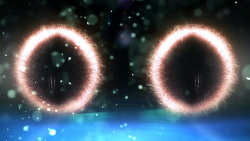
LED lighting has become a part of our everyday lives, from light bulbs in homes to streetlights and smartphone screens. LEDs, or light-emitting diodes, are known for being energy-efficient and long-lasting.
But did you know that nanotechnology—working with materials at an incredibly tiny scale—has been making LEDs even better? By improving their brightness, energy efficiency, and color quality, nanotechnology is helping LEDs light up the world more effectively.
At its core, an LED works by passing electricity through a material called a semiconductor. This material emits light when energized. The key to an LED’s performance lies in the efficiency of this process—how much of the electrical energy gets converted into visible light instead of being wasted as heat.
This is where nanotechnology comes in. By designing and manipulating materials at the nanometer scale (one billionth of a meter), scientists can optimize how LEDs produce and emit light.
One major improvement comes from quantum dots, a type of nanomaterial that has revolutionized LED technology. Quantum dots are tiny particles, only a few nanometers in size, that can emit specific colors of light depending on their size.
When added to LEDs, quantum dots can improve the color quality by producing purer and more vibrant reds, greens, and blues. This makes the light from LEDs look more natural and pleasing, especially in applications like television screens and smart displays.
For example, quantum dot-enhanced LEDs are already used in high-end TVs, marketed as offering “quantum color” for a more lifelike viewing experience.
Nanotechnology also boosts the efficiency of LEDs by reducing energy waste. Traditional LEDs lose some energy as heat, which not only wastes power but can also shorten the lifespan of the light.
Using nanostructures, such as nano-patterned surfaces or coatings, scientists can better control how light is emitted and reflected within the LED. These nanostructures minimize energy loss, ensuring that more electricity is turned into light and less is wasted.
This makes LEDs even more energy-efficient, saving money on electricity bills and reducing their environmental impact.
Another exciting application of nanotechnology in LEDs is the development of materials like graphene. Graphene is a super-thin, ultra-strong material made of a single layer of carbon atoms.
When used in LED production, graphene can improve the durability and heat resistance of the lights. This means LEDs can last even longer and perform better in demanding environments, such as outdoor lighting or industrial settings.
Research also shows that nanotechnology can make LEDs cheaper to produce. Traditional LED manufacturing involves expensive processes, but new methods using nanomaterials like perovskites—a class of materials with excellent light-emitting properties—could significantly lower costs.
Perovskite-based LEDs, enhanced with nanotechnology, are not only efficient but also relatively easy to manufacture, potentially making high-quality LEDs more affordable and accessible.
The impact of nanotechnology on LED lighting goes beyond everyday uses. It’s also helping advance cutting-edge applications, such as in medical devices and agriculture.
For example, LEDs with nano-engineered coatings can produce specific wavelengths of light that promote plant growth in indoor farms or improve diagnostic tools in healthcare.
Nanotechnology is making LEDs brighter, longer-lasting, and more efficient than ever before. By working at the tiniest scales, scientists are solving problems and opening new possibilities for lighting technology.
Whether it’s creating more vibrant colors for your TV screen or reducing energy use in cities, nanotechnology is paving the way for a brighter, more sustainable future.
Copyright © 2025 Knowridge Science Report. All rights reserved.








Leave a Comment